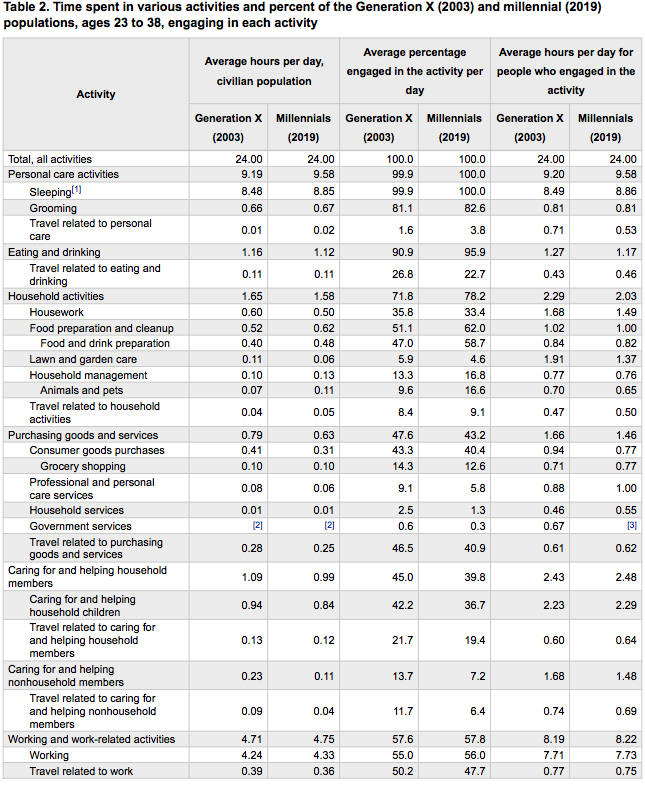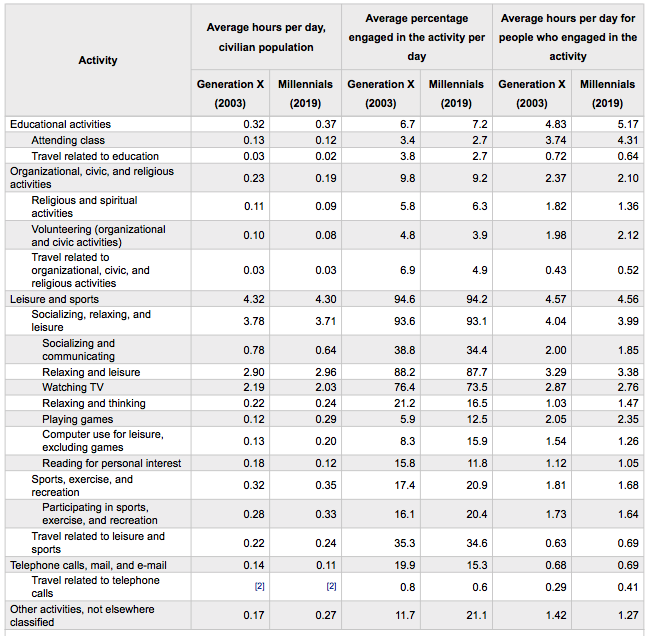What’s the difference between a Gen Xer and a millennial? Age is the most obvious difference, with Gen X born between 1965 and 1980 and millennials born between 1981 and 1996.
But thanks to the new American Time Use Survey, compiled by the Bureau of Labor Statistics, we now know a lot more:
- Gen X men watch more TV than millennial men.
- A Gen Xer is more likely to have children and a home.
- Gen X spends more time shopping for goods.
- Millennial women read for pleasure each day less than Gen X women.
- Millennials sleep 22 minutes a day longer than Gen X.
- Millennials spend less time per day (1.68 hours) than Gen X (1.81 hours) on sports, exercise and recreation.
- Time working each day is almost identical for Gen X (7.71 hours) and millennials (7.73 hours).
- Leisure activities is almost identical, too. (Gen X 4.57 hours a day, millennials 4.56 hours a day.)
The survey compares data of people who were 23 to 38 years old in 2003 with people in that same age group in 2019. Keep in mind the dramatic changes in technology during that time. Facebook wasn’t founded until 2004. Two years later, Twitter arrived.
The Bureau of Labor Statistics did not include commitment to health in the survey, but only 65 percent of millennials and 74 percent of Gen Xers have a primary care physician, according to The Journal of Urgent Care Medicine.
“I do have millennials in my practice but most of my patients are older, the baby boomers,” says Dr. Linette Rosario, a primary care physician with the Hartford HealthCare Medical Group in Bridgeport. (She’s also a millennial.) “Statistics do show that millennials don’t like to go to the doctor.”
Here are more details from the survey (for the complete report, which also includes numbers for men and women, click here):


The Bureau of Labor Statistics cautions that the American Time Use Survey was “greatly affected” by the COVID-19 pandemic, with data collection suspended in 2020 from mid-March to mid-May. The released data includes 2019 and 2020 estimates for May 10 through Dec. 31, comparing pre-COVID time use estimates to those after the virus arrived in the United States.


